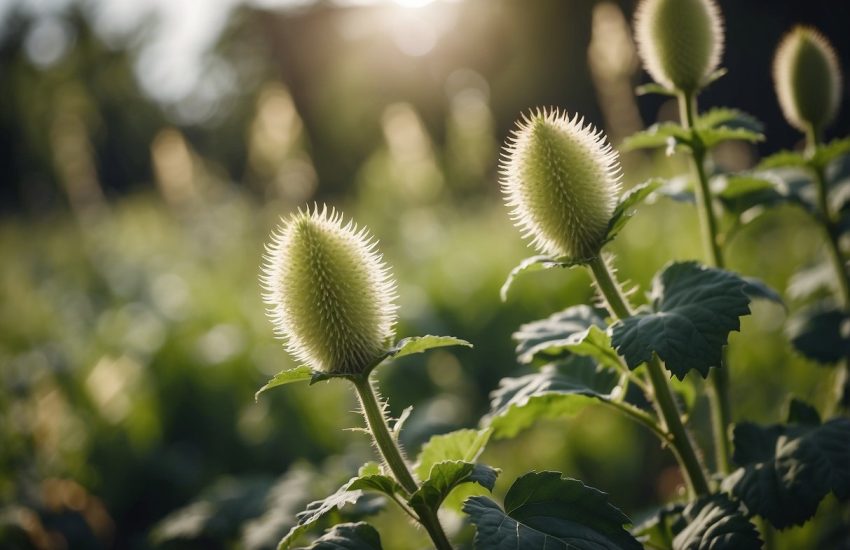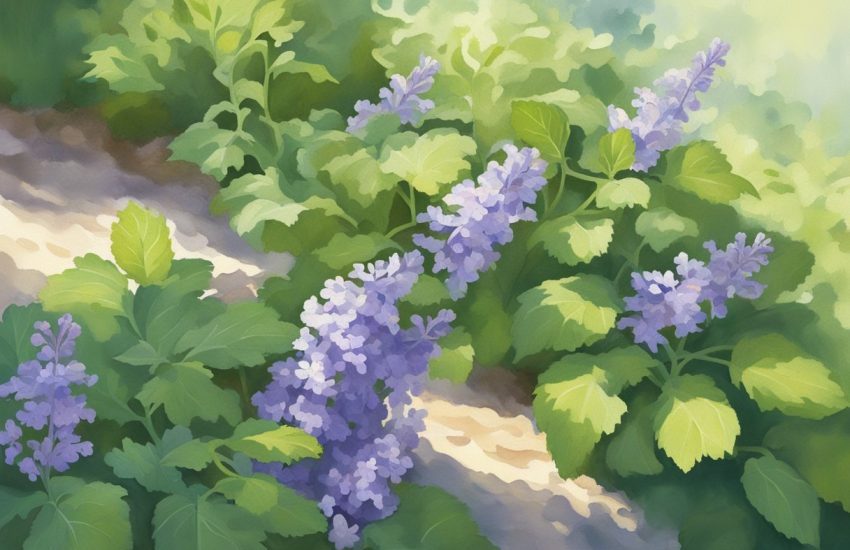Plants for a Conservatory: Top Picks for Year-Round Greenery
A conservatory is a wonderful addition to any living space, providing a tranquil environment to relax in and enjoy the beauty of nature. One key aspect of a conservatory is the greenery that fills the space, creating a calming and refreshing atmosphere. Choosing the right plants for a conservatory can be a challenge, as the environment inside can vary greatly from the outside world.

When selecting plants for a conservatory, it is important to consider the amount of sunlight and humidity that the space receives. Some plants thrive in bright, direct sunlight, while others prefer indirect or filtered light. Similarly, some plants require high humidity levels, while others can tolerate drier conditions. It is also important to consider the size and shape of the conservatory, as well as the overall aesthetic that is desired.
There are many different types of plants that can thrive in a conservatory environment. From tropical palms and ferns to colorful flowering plants and succulents, there is no shortage of options to choose from. With the right selection of plants, a conservatory can become a peaceful oasis that brings joy and relaxation to any living space.
Selecting Plants for Your Conservatory

When it comes to selecting plants for your conservatory, there are a few key factors to consider. Each plant has its own unique requirements, and it’s important to choose species that will thrive in your specific environment.
Temperature Considerations
Temperature is one of the most important factors to consider when selecting plants for your conservatory. Depending on the type of conservatory you have, the temperature can vary greatly. For example, unheated conservatories may be too cold for some plants, while hot conservatories can cause heat stress. It’s important to choose plants that can tolerate the temperature range of your conservatory.
Light and Positioning
Light is another important factor to consider. South-facing conservatories typically receive the most sunlight, while north-facing conservatories receive less. It’s important to position plants accordingly to ensure they receive the right amount of light. Some plants, such as succulents and cacti, prefer bright, direct sunlight, while others, such as tropical plants like Monstera and Fiddle Leaf Fig, prefer indirect light.
Plant Types and Varieties
There are a wide variety of plants that can thrive in a conservatory environment, from climbers and lush, leafy plants to hardy succulents and citrus trees. Some popular conservatory plants include Bougainvillea, Hoya, Yucca, and Philodendron. It’s important to choose plants that will complement your living space and serve as a focal point in your conservatory.
Watering and Humidity Levels
Regular watering and proper humidity levels are crucial for plant health and growth. It’s important to choose plants that have similar watering and humidity requirements, as over or under-watering can lead to plant damage or death. Some plants, such as Spider Plant and Chlorophytum Comosum, are easy-care and require minimal attention, while others, such as Mandevilla and Plumbago, require more attention and care.
Potting and Soil Requirements
Choosing the right potting and soil requirements is also important for plant health and growth. It’s important to choose pots that are the right size for your plants and allow for ample drainage. Some plants, such as Aloe Vera and Snake Plant, prefer well-draining soil, while others, such as Cast Iron Plant and Sago Palm, prefer a more moisture-retentive soil.
Maintenance and Care
All plants require some level of maintenance and care, whether it’s regular watering, feeding, or pest control. It’s important to choose plants that fit your lifestyle and schedule. Some plants, such as Aspidistra Elatior, are low-maintenance and require minimal care, while others, such as Hibiscus Rosa-Sinensis, require more attention and care.
Designing Your Conservatory Layout
When designing your conservatory layout, it’s important to consider both form and function. Shelves and hanging baskets can be used to create a jungle-like atmosphere, while larger plants like Monstera Deliciosa and Citrus trees can serve as focal points. Blinds and heating systems can also be used to regulate temperature and create a comfortable environment for your plants.
Plant Health and Growth
To ensure your plants stay healthy and continue to grow, it’s important to monitor their growth and health. Regular pruning and repotting can help prevent overcrowding and promote healthy growth. Fertilizer can also be used to provide essential nutrients for plant growth.
Common Conservatory Plant Species
There are a wide variety of plant species that can thrive in a conservatory environment. Some popular species include Monstera Deliciosa, Citrus Trees, Aloe Vera, Snake Plant, Cast Iron Plant, Sago Palm, Jade Plant, Spider Plant, Philodendron, Dracaena, Strelitzia, Mandevilla, Plumbago, and Hibiscus Rosa-Sinensis.
Seasonal Care and Adjustments
Seasonal care and adjustments are important for maintaining plant health and growth throughout the year. In winter, it’s important to ensure your conservatory stays warm enough for your plants, while in summer, it’s important to provide ample ventilation and shading to prevent overheating.
Conservatory Planting for Beginners
For beginners, it’s important to start with easy-care plants that require minimal attention and care. Some good options include Aspidistra Elatior, Chlorophytum Comosum, and Snake Plant. As you become more experienced, you can start to experiment with more challenging species.
Enhancing Your Conservatory Environment

A conservatory is a perfect place to create a lush and leafy oasis, bringing a touch of the outdoors inside. By selecting the right plants and utilizing a few well-placed decorative touches, you can transform your conservatory into a tranquil and inviting space that will be enjoyed by all.
Creating a Fragrant Oasis
One way to enhance your conservatory environment is to incorporate fragrant plants. Jasmine is a popular choice that will fill your space with a sweet and intoxicating scent. Citrus trees, such as lemon or orange trees, also add a fresh and invigorating aroma to the air.
Incorporating Edible Plants
In addition to their beauty, many plants can also serve a practical purpose. Edible plants, such as herbs and fruit trees, can be incorporated into your conservatory to provide fresh ingredients for cooking and baking. Lemon or orange trees not only smell great but also produce delicious fruit.
Utilizing Climbing Plants
Climbing plants can add an extra layer of interest to your conservatory. Mandevilla and plumbago auriculata are two popular choices that can trail along walls or trellises. They not only provide a visual element but also help to fill in empty spaces with greenery.
Decorative Touches with Succulents and Cacti
Succulents and cacti are perfect for adding a decorative touch to your conservatory. Their unique shapes and textures can add interest to any space. Aloe, sago palms, and spineless yucca are all great choices that require minimal maintenance.
Achieving a Tropical Jungle Feel
For those who want to create a tropical jungle feel, there are many plants to choose from. Monstera and philodendron are popular choices that can add a lush and exotic touch to your conservatory. By selecting plants with large leaves and bold textures, you can create a space that feels like a true jungle oasis.
Incorporating a variety of plants and decorative touches can transform your conservatory into a beautiful and inviting space. With a little creativity and planning, you can create a space that is both practical and visually appealing.


